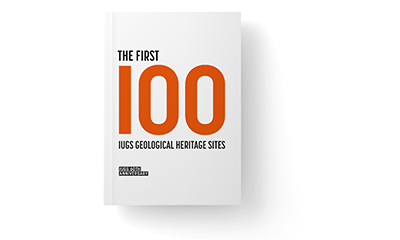Carissimi Soci SGI,
Carissimi Soci Società Associate,
su indicazione del Prof. Rodolfo Carosi (Università di Torino), vi segnaliamo comunicato di IUGS circa i primi 100 geositi selezionati nell'ambito del 60° anniversario di IUGS che verranno presentati dal 25 al 28 ottobre a Zumaia, Spagna. Il pdf del libro può essere scaricato gratuitamente dal sito: https://iugs-geoheritage.org.
Al progetto ha contribuito anche la sezione di Geologia Himalayana che ha proposto, tramite la commissione TecTask di IUGS, il geosito di Rongbuk (Cina) per la faglia a basso angolo più alta e più famosa del mondo: il South Tibetan Detachment System, già noto ai lettori di Geologicamente.
Di seguito sarà possibile scaricare la selezione dei geositi italiani rientrati tra i primi 100.
Cordiali saluti,
La Segreteria
The First 100 IUGS Geological Heritage Sites
The Basque Coast Geopark will host from October 25 to 28 the presentation of The First 100 IUGS Geological Heritage Sites. Among the first 100 geological sites of high international importance are emblematic places from all over the world.
The International Union of Geological Sciences (IUGS) is one of the World's largest scientific organizations with 121 national members representing over a million geoscientists. The presentation of The First 100 IUG Geological Heritage Sites will kick off an endeavor to designate geological sites from around the world that are iconic, recognized by all geoscience community for their impact in understanding the Earth and its history. An IUGS Geological Heritage Site is a key place with geological elements and/or processes of scientific international relevance, used as a reference, and/or with a substantial contribution to the development of geological sciences through history. Some of the oldest rocks on Earth from South Africa, traces of primitive life from Australia and China, some of the best dinosaur fossil remains from Canada, the firts evidences of early hominin developmnet from Tanzania, the marine rocks of the top of the World from Mount Everest and iconic sites like
the impressive Grand Canyon (USA), Perito Moreno glacier (Argentina), Santorini Caldera (Greece) or Uluru in Australia are only a few examples of this impressive list.
See the complete list and download the book "The First 100" at the new website of the IUGS International Geological Heritage Commission: https://iugs-geoheritage.org
More than 250 specialists from 40 nations and ten international organisations, representing different disciplines of Earth Sciences, have participated in the selection of sites. 181 candidate sites from 56 countries were proposed and were evaluated by 33 international experts. The result of this challenging and collaborative process is the list of the First 100 IUGS Geological Heritage Sites that will be presented in Zumaia by most of the authors. The final program of the event is available at https://geoparkea.eus/iugs-globalgeosites.
IUGS recognition gives visibility to those sites. It identifies them as being of the highest scientific value. They are sites that served to develop the science of geology, particularly its early history. They are the world's best demonstrations of geologic features and processes. They are the sites of fabulous discoveries of the Earth and its history.
Many of the "First 100" are well protected in national parks, geoparks, and natural reserves, but many are not. Recognition and visibility of the "First 100" IUGS Geological Heritage Sites
can lead to their further appreciation, to their use as educational resources, and, most importantly, to their preservation.
The "First 100" aspires to be a memorable event that culminates with the reading of a declaration highlighting the importance of Earth Sciences and their conservation to cope with the main environmental challenges of the 21st century.
The First 100 IUGS Geological Heritage Sites
-







